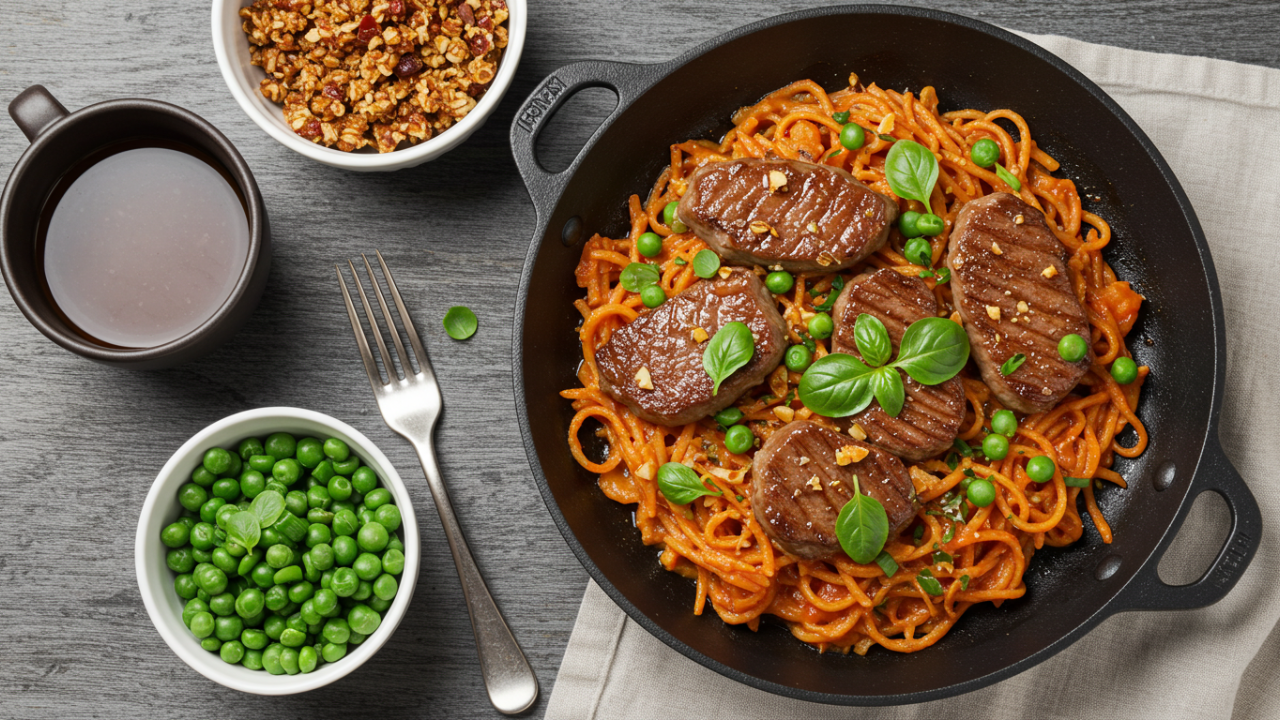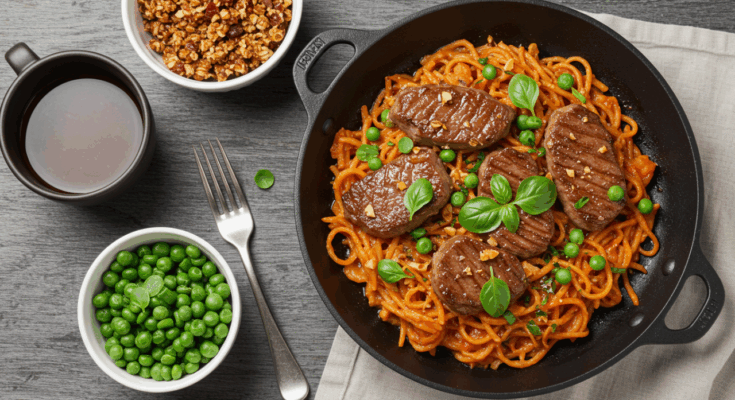Weeknights are a battlefield for many home cooks: exhaustion from the day, limited time before everyone crashes, and the eternal quest for meals that are quick, tasty, and nutritious. You’ve got your go-to pasta or stir-fry, but they often fall flat—lacking that punch that makes dinner feel special without extra effort. What if I told you there’s a single ingredient lurking in the aisles of your grocery store (or already in your fridge) that can transform these rushed routines into flavorful triumphs? The secret? Miso paste. This unassuming fermented soybean powerhouse is the umami-packed hero you’ve been missing. In this guide, we’ll unpack what miso is, why it belongs in your pantry, and how to wield it for effortless weeknight wonders. With detailed recipes, tips, and insights, you’ll gain the confidence to experiment, answering questions like “How do I use miso without making everything taste like soup?” and “Is it really that versatile?” Let’s dive in and make your evenings easier and more exciting.
Understanding Miso: The Umami Powerhouse
Miso paste, originating from Japanese cuisine but now a global staple, is made by fermenting soybeans with salt and a koji culture (often rice or barley). The result is a thick, savory paste that’s been aged anywhere from a few weeks to several years. It’s not just a base for soup—it’s a flavor enhancer that adds depth, saltiness, and a subtle nuttiness to dishes.
There are several types to know, each suited to different uses:

White Miso (Shiro Miso)
Mild and sweet, with a shorter fermentation time. It’s creamy, almost buttery, making it ideal for beginners. Use it in dressings, marinades, or light sauces where you want subtlety without overpowering other ingredients.
Yellow Miso (Shinshu Miso)
A middle-ground option, slightly saltier than white with a balanced flavor. Great for everyday cooking, like stirring into veggies or glazing meats.
Red Miso (Aka Miso)
Darker, bolder, and more intense due to longer fermentation. It packs a punch of umami and earthiness, perfect for hearty stews or bold glazes. Start with less if you’re new, as it can dominate.
Why is miso a weeknight wonder? First, it’s shelf-stable—once opened, it lasts up to a year in the fridge, so no waste. Nutritionally, it’s a winner: packed with probiotics for gut health, complete protein (about 2-3 grams per tablespoon), and minerals like zinc and manganese. It reduces the need for multiple seasonings; a spoonful can replace stock cubes, soy sauce, or even cheese in some recipes. For those watching sodium, opt for low-sodium varieties, but remember—a little goes a long way, so you control the intake.
Common question: “Does miso make everything taste Japanese?” Not at all. Its versatility shines in fusion cooking—think miso in Italian pasta or Mexican tacos. It amplifies existing flavors rather than overshadowing them, solving the “my food is bland” dilemma without hours of simmering.
Sourcing and Storing Miso for Maximum Freshness
To make miso your secret weapon, start with quality. Look for it in the refrigerated section of Asian markets, health food stores, or even mainstream groceries—brands like Miso Master or Hikari are reliable and organic options. Avoid overly processed versions with additives; pure miso lists just soybeans, koji, salt, and perhaps rice.
Storage is straightforward: Keep it in an airtight container in the fridge. It won’t spoil easily due to fermentation, but check for mold or off smells after months. Pro tip: Portion it into ice cube trays, freeze, and pop out as needed for single-use convenience. This answers the frequent query, “How do I avoid wasting a whole tub?”—freezing preserves flavor without texture changes.
Cost-wise, a 1-pound tub runs $5-10, yielding dozens of meals. For gluten-free folks, choose rice-based miso over barley varieties.
Easy Techniques to Infuse Miso into Weeknight Meals
The beauty of miso lies in its simplicity—no special skills required. Here are actionable ways to integrate it, building flavor in under 30 minutes.
Dissolving for Broths and Sauces
Miso doesn’t like boiling; high heat kills probiotics and muddies taste. Whisk 1-2 tablespoons into warm (not hot) liquid like broth or pasta water. This creates instant depth for soups or gravies.
Mixing into Dressings and Marinades
For salads or proteins, blend miso with oil, vinegar, and a sweetener. Example: 1 tbsp miso + 2 tbsp rice vinegar + 1 tsp honey + 3 tbsp oil = a tangy dressing ready in seconds.
Glazing for Roasts and Grills
Thin miso with mirin or water, brush on veggies or fish, and broil. It caramelizes beautifully, adding a glossy, savory crust.
Stirring into Staples
Add to mashed potatoes, scrambled eggs, or even popcorn butter for unexpected boldness.
These methods address “How much miso do I use?”—start with 1 teaspoon per serving and adjust. Taste early; its saltiness intensifies as it sits.
Mouthwatering Weeknight Recipes with Miso
Let’s put miso to work with four original recipes, each under 30 minutes prep-to-plate, serving 4. They’re scalable, use pantry staples, and highlight miso’s transformative power.
Miso-Glazed Sheet Pan Chicken and Veggies
A one-pan wonder for busy nights.
Ingredients:
- 4 chicken thighs (bone-in or boneless)
- 2 cups broccoli florets
- 2 carrots, sliced
- 2 tbsp white miso
- 1 tbsp honey
- 1 tbsp soy sauce
- 1 tbsp sesame oil
- Sesame seeds for garnish
Instructions:
- Preheat oven to 425°F. Line a sheet pan with foil.
- Whisk miso, honey, soy, and oil into a glaze.
- Toss chicken and veggies in half the glaze; spread on pan.
- Roast 20-25 minutes, brushing with remaining glaze halfway.
- Garnish with seeds. Serve over rice.
This yields juicy chicken with caramelized edges—miso’s umami makes it taste slow-cooked.
Creamy Miso Butter Pasta
Comfort food upgraded, vegetarian-friendly.
Ingredients:
- 12 oz pasta (spaghetti or fettuccine)
- 3 tbsp butter
- 2 tbsp yellow miso
- 1 cup pasta water (reserved)
- ½ cup grated Parmesan
- 2 garlic cloves, minced
- Fresh basil or spinach
Instructions:
- Cook pasta al dente; reserve water.
- In the pot, melt butter over medium. Sauté garlic 1 minute.
- Whisk in miso and ½ cup pasta water until smooth.
- Toss in pasta, cheese, and greens; add more water for creaminess.
- Serve immediately.
Miso adds a cheesy depth without extra dairy—perfect for “What if I’m lactose intolerant?” swaps (use vegan butter and cheese).
Quick Miso Veggie Stir-Fry
Plant-based speed demon.
Ingredients:
- 4 cups mixed veggies (bell peppers, zucchini, snap peas)
- 1 block tofu, cubed (optional protein)
- 2 tbsp red miso
- 1 tbsp ginger, grated
- 1 tbsp rice vinegar
- 2 tbsp oil
- Cooked noodles or quinoa
Instructions:
- Heat oil in a wok over high.
- Stir-fry veggies and tofu 5-7 minutes.
- Mix miso, ginger, vinegar, and ¼ cup water; pour over.
- Cook 2 minutes until glazed.
- Serve over base.
Red miso’s boldness shines here, answering “How to make veggies exciting?”
Speedy Miso Broth with Noodles
Soothing yet substantial.
Ingredients:
- 4 cups broth (veggie or chicken)
- 2 tbsp white miso
- 8 oz ramen or soba noodles
- 2 eggs, soft-boiled
- Sliced scallions and mushrooms
Instructions:
- Boil noodles; drain.
- Warm broth gently; whisk in miso off heat.
- Add noodles, veggies, and halved eggs.
- Top with scallions.
This elevates instant ramen—miso provides restaurant-quality flavor fast.
Pro Tips for Miso Mastery and Variations
To avoid common pitfalls: Don’t cook miso at high temps—add at the end. If too salty, dilute with water or add acid like lemon.
Variations: For vegan, skip animal products. Gluten-free? Use tamari instead of soy. Spice lovers, mix in chili paste.
Pairings: Miso loves acids (citrus) and sweets (honey) for balance. Experiment weekly to build intuition.
Health boost: Its fermentation aids digestion; pair with fiber-rich foods.
FAQ
Is miso suitable for all diets?
Mostly yes—vegan (check labels), but some contain barley (gluten). Low-sodium options exist for heart health.
How do I know if my miso has gone bad?
Look for mold or sour smells beyond its natural funk. Properly stored, it’s very durable.
Can I use miso in desserts?
Surprisingly, yes—in small amounts for salted caramel vibes or chocolate brownies for umami twist.
What’s the difference between miso and other pastes like gochujang?
Miso is milder and more versatile; gochujang is spicier, Korean-style. Start with miso for subtlety.
How much miso should I buy as a beginner?
A small 8-16 oz tub—enough for 10-20 meals without overwhelming your fridge.



